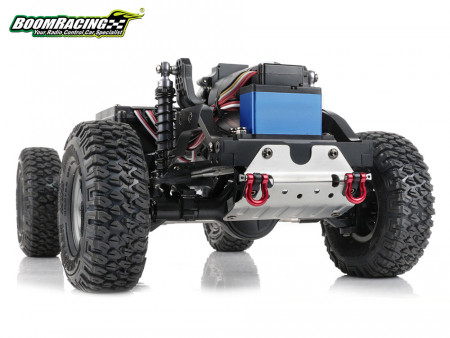
How To Read Motor Data?
We are not going to talk about ESC or any other parts other than motor today. Before we start, let's have a basic sense of sizes of motors. Following are some typical motor sizes:
540--36mm diameter, 45-55mm length
550--36mm diameter, 56+ mm length
380--28mm diameter, 45-55mm length
370--24-28mm diameter, 35-45mm length
"If I'm a crawler type of guy, do I have to choose a brushed motor?"
Well, for whichever type of cars, you can go brushed or brushless just as you like. Nowadays, more and more people are getting brushless motors but still a lot of people stay brushed. Compared with the same range price of brushed motors, it's very natural that brushless motors can go faster and more dependable and run at higher voltages. However, if you have a really tight budget, the right brushed motor won't disappoint you as well.
"I'm a drift car owner, so should I go with high KV or low KV?"
KV stands for RPMs per volt. The higher the KV, the faster the car will go per volt. Well, a lower KV motor can provide more torque than that of a higher one, mainly because they will utilize more voltage and draw fewer Amps than a motor with a higher KV. In another word, motors with higher KV will make your car go faster, on flat road especially. Motors with lower KV can provide your car more power. Under normal circumstances, crawlers will value power more than speed since most of the time, crawlers are running on rocks, so go with lower KV should not be a wrong choice. Drift cars are the opposite. Speed is the king for drifters. And what a flat drift field needs high climbing force for? (Michael please help me with this sentence……………..)
"Why people are talking about T? What does that stand for?"
Brushed motors are indicated by turns. The lower the turn numbers the faster the motor. In an easier way to remember, lower turns is effectively the same thing as higher KV.
"Why my online store supporter recommended me a sensorless motor after I told her I have a crawler?"
Sensored Motors uses the "hall effect" to detect the rotor (magnetic poles with different polarity) inside the motor and transmit the data to the ESC through a sensor wire. It allows the ESC to control the rotation and the speed of the motors precisely. In general, it is smoother compared to a sensorless motor with the wire connected, and the signals are sent and received correctly. Sensorless motors are more efficient when running at a high RPM (revolution per minute) than sensored motors. It would have no friction without the contact and have no heat produced. Unlike sensored motors that need open space for ventilation, sensorless motors do not need that so it is usually sealed to prevent dirt or small particles to get in.
"What if there are two motors with the same specification but from two different brands?" Bro, read more reviews, introductions and maybe testing videos. I can only say good luck with your first motor try.

















